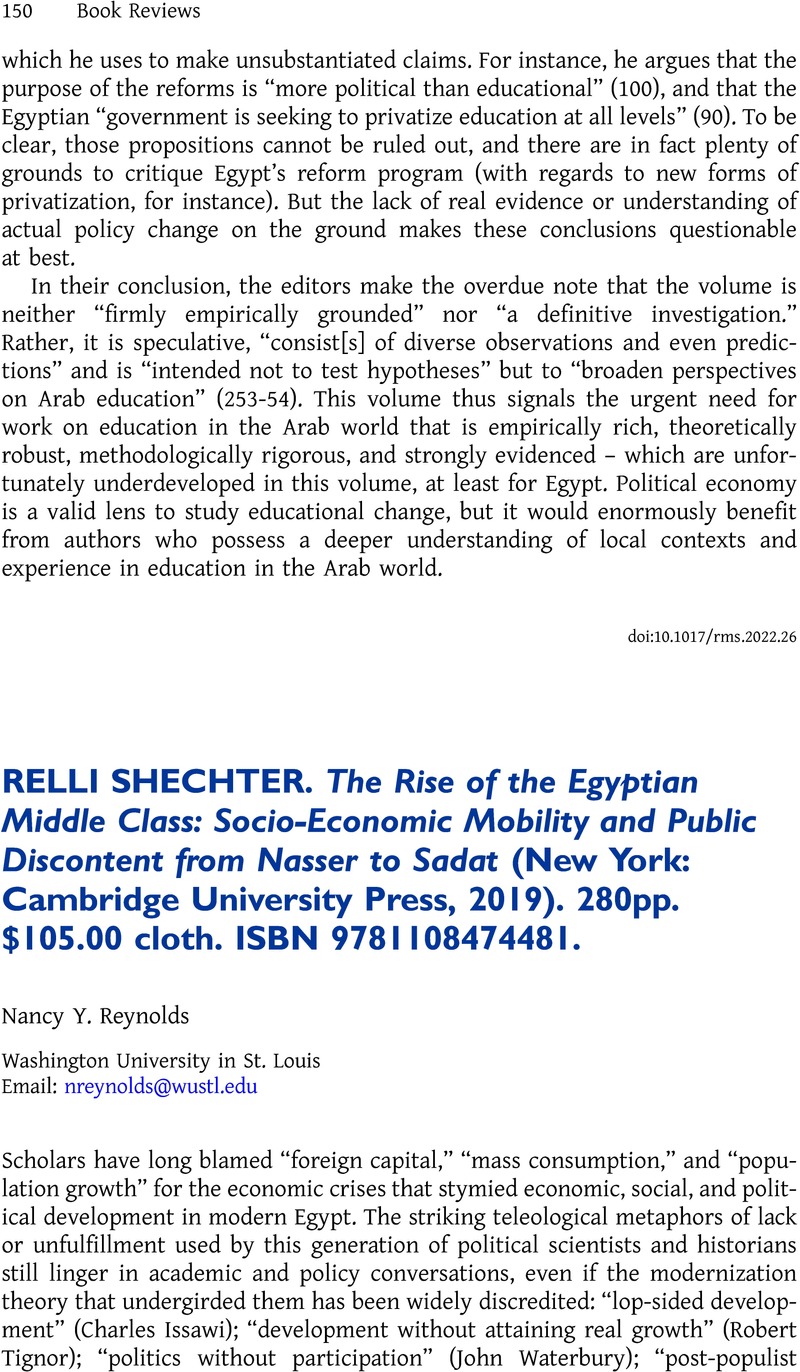No CrossRef data available.
Article contents
RELLI SHECHTER. The Rise of the Egyptian Middle Class: Socio-Economic Mobility and Public Discontent from Nasser to Sadat (New York: Cambridge University Press, 2019). 280pp. $105.00 cloth. ISBN 9781108474481.
Review products
RELLI SHECHTER. The Rise of the Egyptian Middle Class: Socio-Economic Mobility and Public Discontent from Nasser to Sadat (New York: Cambridge University Press, 2019). 280pp. $105.00 cloth. ISBN 9781108474481.
Published online by Cambridge University Press: 20 January 2023
Abstract
An abstract is not available for this content so a preview has been provided. Please use the Get access link above for information on how to access this content.

- Type
- Book Review
- Information
- Copyright
- Copyright © The Author(s), 2023. Published by Cambridge University Press on behalf of Middle East Studies Association



